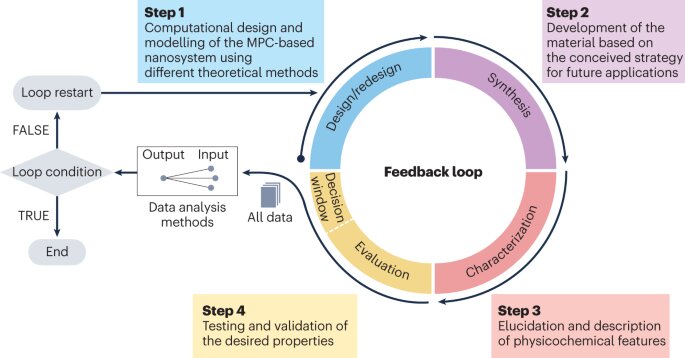In a recent comprehensive review article, researchers from the Nanoscience Center at the University of Jyväskylä, Finland, explore the remarkable properties of nanometer-sized metal clusters that make them suitable for versatile applications in catalysis, bioimaging, sensing, and targeted drug delivery.
This wide range of applications is made possible by the atomically precise structure of the nanoclusters, which can be modified to enhance their physical and chemical properties through a synergistic combination of computational modeling and experimental characterization.
The metal nanoclusters consist of a hybrid inorganic-organic structure, with the inorganic metal core composed of metals like gold or silver, or a combination of noble and transition metals.
The metal core is shielded by a layer of organic ligand molecules such as thiols, phosphines, carbenes, or alkynyls. The choice of metals in the inorganic core determines the clusters’ physical properties, while the organic ligand shell governs their solubility and functionality in the surrounding environment. For example, ligands that render the clusters soluble in water can be used for targeted binding to biomolecules like peptides or proteins.
This versatility allows the clusters to be used as imaging agents for proteins or viruses using electron microscopy or fluorescence spectroscopy, as precise delivery vehicles for drugs when incorporated with target-recognizing peptides, or as photosensitizers in photodynamic therapy, initiating photochemical reactions to generate reactive oxygen species.
The small size of the clusters, consisting of up to a few hundred metal atoms, makes them ideal for high-accuracy computational modeling.
“While metal clusters have been the subject of investigation for decades, it is only recently that their broad application potential, ranging from catalysis to biomedicine, has been recognized,” says Dr. María Francisca Matus, the lead author of the review article from the University of Jyväskyla.
“We are confident that these unique nanosystems will offer tremendous, yet untapped, application possibilities, particularly in biomedicine where precise atomic-scale design is crucial for efficient, biocompatible, and safe nanotherapies.”
“We are delighted to have been invited to write this comprehensive review article for one of the leading journals in the field, which also acknowledges our significant research contributions in the science of metal nanoclusters in Jyväskylä. We hope that this contribution will inspire even greater global research efforts in this rapidly growing field of nanoparticle research,” concludes Professor Hannu Häkkinen, the senior author of the article.
The findings have been published in the esteemed journal Nature Reviews Materials.
More information: María Francisca Matus et al, Understanding ligand-protected noble metal nanoclusters at work, Nature Reviews Materials (2023). DOI: 10.1038/s41578-023-00537-1
Citation: Metal nanoclusters are tunable for many applications from catalysis to biomedicine, says study (2023, June 16) retrieved 16 June 2023 from https://phys.org/news/2023-06-metal-nanoclusters-tunable-applications-catalysis.html
This document is subject to copyright. Apart from any fair dealing for the purpose of private study or research, no part may be reproduced without written permission. The content is provided for information purposes only.
Denial of responsibility! TechCodex is an automatic aggregator of the all world’s media. In each content, the hyperlink to the primary source is specified. All trademarks belong to their rightful owners, and all materials to their authors. For any complaint, please reach us at – [email protected]. We will take necessary action within 24 hours.

Jessica Irvine is a tech enthusiast specializing in gadgets. From smart home devices to cutting-edge electronics, Jessica explores the world of consumer tech, offering readers comprehensive reviews, hands-on experiences, and expert insights into the coolest and most innovative gadgets on the market.


